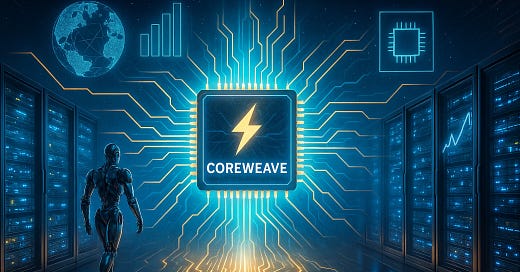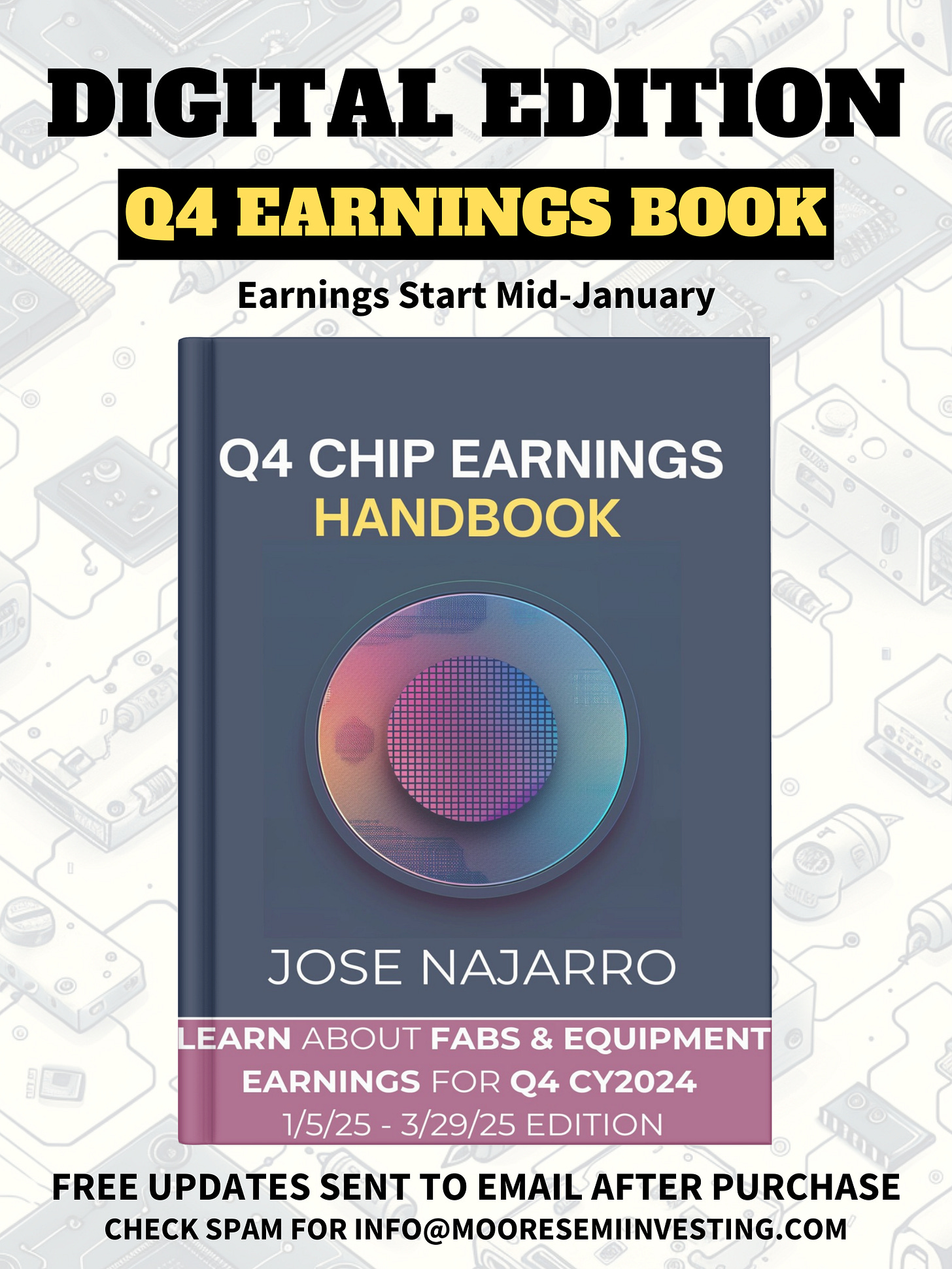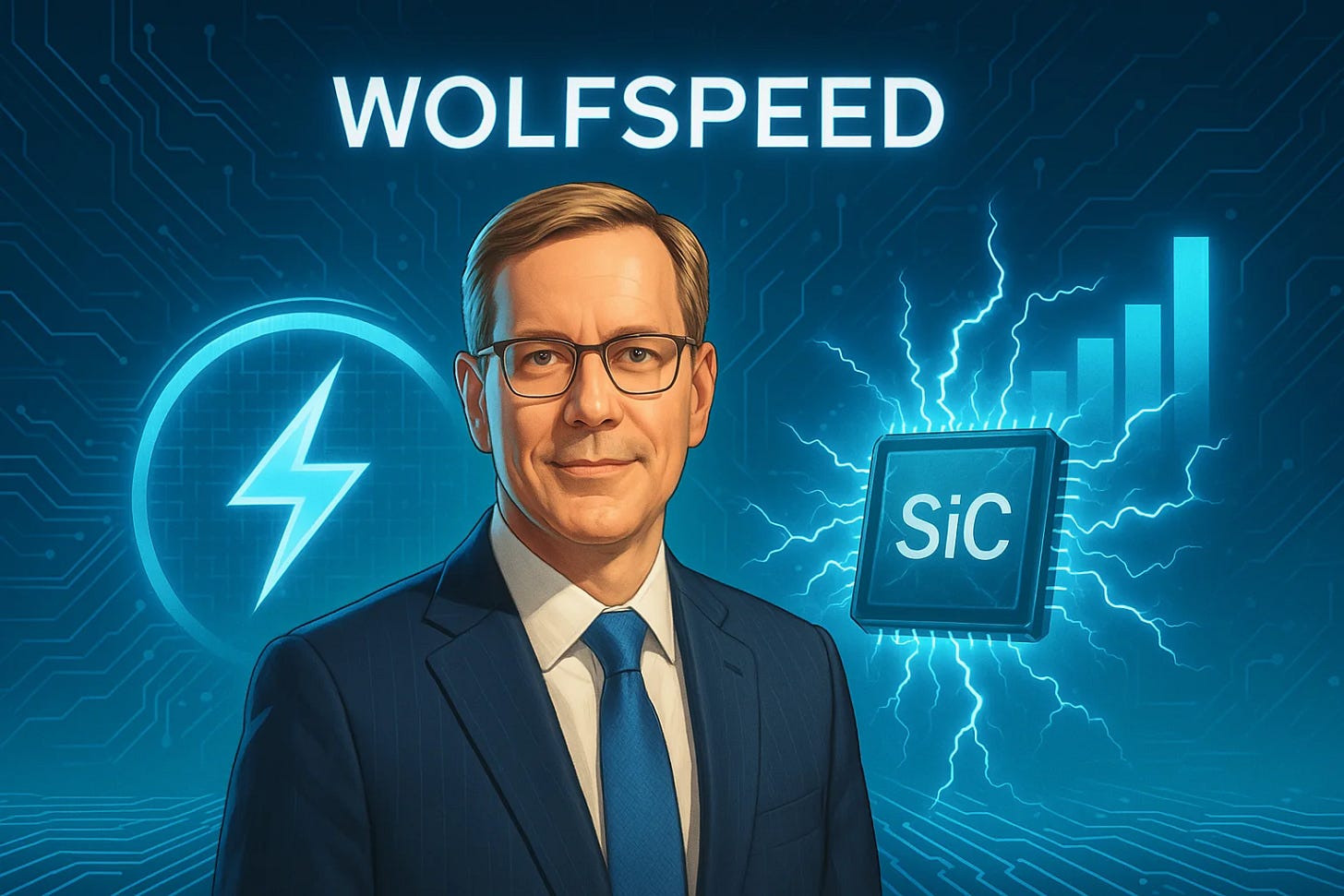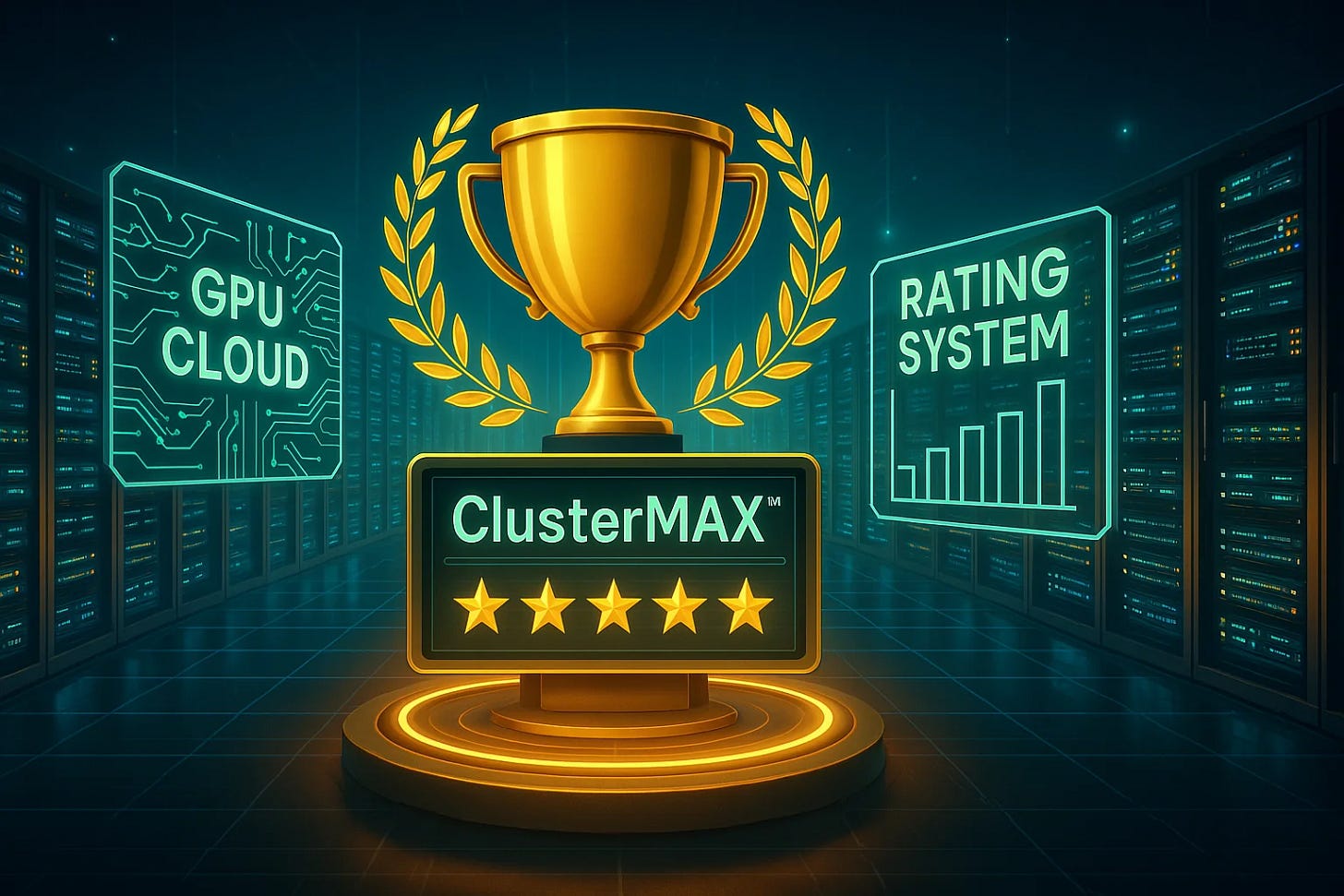💥 CoreWeave: The AI “Hyperscaler” Takes Center Stage
Welcome, AI & Semiconductor Investors,
CoreWeave’s long-awaited IPO finally puts the AI-focused cloud provider in the spotlight, highlighting explosive revenue growth but also stirring investor caution due to high debt and scaled-back ambitions.
We also dive into Wolfspeed’s high-stakes CEO transition aimed at profitability, and SemiAnalysis’s groundbreaking GPU cloud rating system that's shaking up the AI infrastructure market. — Let’s Chip In
What The Chip Happened?
💥 CoreWeave: The AI “Hyperscaler” Takes Center Stage
⚡Wolfspeed Names Robert Feurle as CEO in High-Stakes Leadership Transition
🏆SemiAnalysis Rolls Out Industry-First GPU Cloud Rating System
[Micron Technology’s Q2 2025: AI-Driven Momentum and Record Data Center Sales]
Read time: 7 minutes
CoreWeave (CRWV)
💥 CoreWeave: The AI “Hyperscaler” Takes Center Stage
What The Chip: CoreWeave officially made its public debut on March 28, 2025, under the ticker symbol CRWV. The cloud computing provider, specializing in GPU-intensive AI workloads, drew investor attention thanks to its staggering revenue growth—but scaled back its IPO size amid market caution.
Details:
⚡ High-Octane Revenue: CoreWeave’s 2024 revenue soared to $1.9 billion (up from $229 million in 2023). CEO Michael Intrator said, “Our pivot from crypto to AI was a bet on the future—and we see no ceiling yet.”
⚠️ IPO Scaled Back: Originally planning to offer 49 million shares at $47–$55, CoreWeave trimmed its offering to ~37.5 million shares at $40, raising about $1.5 billion instead of $2.7 billion.
🤝 NVIDIA Partnership: NVIDIA remains a key partner and supplier, even placing a $250 million anchor order in the IPO. This close relationship grants CoreWeave early access to cutting-edge GPUs.
📊 Huge Backlog: The company reported $15.1 billion in unfulfilled contract obligations, highlighting strong demand from AI customers like Microsoft and OpenAI.
🏦 Heavy Debt Load: Despite holding $1.36 billion in cash, CoreWeave carries ~$8 billion in debt plus $2.6 billion in operating leases—reflecting its “grow fast now, profit later” approach.
🔎 Governance Hurdles: A dual-class share structure gives founders (CEO Intrator, CSO Brian Venturo, and CDO Brannin McBee) 79% voting control, raising questions about long-term investor influence.
🏗️ Early Mover in AI Infrastructure: Operating 32 data centers across North America and Europe, CoreWeave touts itself as the “AI Hyperscaler™,” offering fast provisioning and specialized GPU power.
🤔 Customer Concentration: Microsoft alone accounted for 62% of CoreWeave’s 2024 revenue, highlighting both the strength of marquee deals and the risk of over-reliance on one partner.
Why AI/Semiconductor Investors Should Care: CoreWeave’s story underscores the surging appetite for AI-optimized infrastructure and GPU-driven compute services. While its big contract backlog and ties to NVIDIA look promising, the company’s hefty losses, high debt, and customer concentration create both risks and opportunities. For investors, CoreWeave is a litmus test for the market’s confidence in dedicated AI cloud providers—and a chance to ride the next wave of data center innovation.
Moore Semiconductor Investing
📗 [NEW!!] Unlock Q4 Semiconductor Earnings --- 60% OFF (NEW EARNINGS)
What The Chip: Get a front-row seat to the financials shaping the semiconductor industry. This continuously updated e-book by Jose Najarro distills the latest Q4 quarterly insights—from wafer production trends to AI chip breakthroughs—into a single comprehensive resource.
Details:
🔵 Dynamic Updates: Start with giants like TSMC and ASML, then expand to 30+ companies as their Q4 2024 earnings roll in. Earnings are restarting!!
🔵 Broad Coverage: From traditional chipmakers to cutting-edge AI semiconductor players, get the full picture as it emerges.
Why AI/Semiconductor Investors Should Care: This evolving earnings handbook gives you a strategic edge. Understanding quarterly earnings data is crucial for gauging industry health, discovering new growth leaders, and aligning your investment approach with emerging technological waves.
Disclaimer: For educational and informational purposes only. Not financial advice. Consult with a qualified professional before making any investment decisions. Updates are only for the Quarter of Earnings.
Wolfspeed (NYSE: WOLF)
⚡Wolfspeed Names Robert Feurle as CEO in High-Stakes Leadership Transition
What The Chip: On March 27, 2025, Wolfspeed announced that industry veteran Robert Feurle would step in as CEO effective May 1, 2025. The leadership change comes amid Wolfspeed’s push to strengthen its balance sheet and ramp up silicon carbide (SiC) production during a pivotal phase for the company.
Details:
⚙️ Deep SiC Expertise: Feurle previously led major power semiconductor initiatives at Infineon, Micron, and ams-OSRAM. He even helped oversee Infineon’s 2016 attempt to acquire Wolfspeed, giving him a strong institutional understanding of the business.
🏭 Operational Turnarounds: At ams-OSRAM, Feurle managed 10,000 employees, grew market share in automotive LEDs, and introduced advanced technologies. His track record could bolster Wolfspeed’s ongoing restructuring efforts.
⚡ Focus on Profitability: “We will work through this transformative period to refresh the operating plan, improve financial performance and accelerate our path to positive free cash flow,” said Feurle. He aims to leverage Wolfspeed’s 200mm SiC fab investments to meet rising EV and energy market demand.
📉 Market Skepticism: Investors remain cautious. The stock dipped 2% after the announcement, reflecting concerns about transitioning leadership while Wolfspeed faces declining automotive/industrial orders and a high-profile, $5B plant under construction.
🏛️ Policy Pressures: Ongoing uncertainty around CHIPS Act funding adds complexity. Feurle’s approach to securing grants and balancing cost-cutting will be central to Wolfspeed’s strategic direction.
🌐 Global Perspective: Feurle, a dual US-German citizen, is relocating to Durham, NC. Thomas Werner, interim Executive Chairman, noted, “We are excited to welcome Robert … [His] history of delivering significant operational enhancements and profitability improvements … is a significant contributor to our decision.”
Why AI/Semiconductor Investors Should Care: Feurle’s appointment signals a renewed focus on stabilizing finances and expanding Wolfspeed’s SiC technology, which is in high demand for EVs and renewable energy. The success of this leadership transition will likely shape Wolfspeed’s competitive edge, especially if Feurle can manage policy uncertainties and guide the company toward profitable growth in a rapidly evolving semiconductor landscape.
SemiAnalysis
🏆SemiAnalysis Rolls Out Industry-First GPU Cloud Rating System
What The Chip: SemiAnalysis just unveiled the ClusterMAX™ Rating System, an industry-first independent evaluation of GPU cloud services, on March 28, 2025. The goal: Provide a transparent, data-driven guide for renting GPUs across 100+ AI Neoclouds and Hyperscalers.
Details:
🔍 Five Tiers, One Standard: The new ClusterMAX™ system ranks GPU providers as Platinum, Gold, Silver, Bronze, or UnderPerform, shining a light on crucial factors like security, SLA reliability, network performance, and tech expertise.
🏅 Platinum Spotlight: Only CoreWeave snagged the top spot, backed by "superior reliability and an active feedback loop with the community," per SemiAnalysis. They’re the only non-Hyperscaler to operate clusters of 10k+ H100s reliably.
📊 Crucial Criteria: Security certifications (like SOC2), managed Slurm/Kubernetes offerings, robust burn-in tests for GPUs, and high NCCL performance top the must-have list for a best-in-class GPU cloud.
💼 The Buyers’ Market: More than 100 cloud providers compete for GenAI customers. According to SemiAnalysis, “We now believe it’s a buyers’ market for GPU rentals,” with prices trending lower.
💡 Jensen Huang’s Warning: NVIDIA’s Chief Revenue Destroyer quipped, “When Blackwells start shipping in volume, you couldn’t even give Hoppers away.” The takeaway? GPU providers should lock in long-term deals to shield themselves from falling compute prices.
🏷 Price Pressure: H100 rental rates have dropped with the ramp of new next-gen GPUs, including AMD’s MI300 and upcoming Blackwell-based SKUs. SemiAnalysis sees these trends continuing to pressure older GPU pricing.
🤝 Strategic Partnerships: NVIDIA-backed GPU clouds—including CoreWeave, Nebius, and Crusoe—are pushing the envelope in networking and HPC-level orchestration. Meanwhile, AMD’s “Alliance Instinct Cloud Partners” face mounting challenges in matching key security and performance standards.
🔧 What’s Next: SemiAnalysis plans updates every 3-6 months to keep pace with improvements. Many Bronze-tier players (like Google Cloud) could climb to Gold or Platinum by focusing on rigorous security, out-of-the-box HPC features, and advanced monitoring.
Why AI/Semiconductor Investors Should Care: As the cost of GPU computing falls and competition heats up, strategic investors need to watch how rental pricing, security, and performance factor into cloud operators’ margins. This ClusterMAX™ rating approach offers a roadmap to which providers are best positioned for growth—and which might fall behind in an increasingly crowded AI landscape.
Youtube Channel - Jose Najarro Stocks
[NEW] Semiconductor Q4 Earnings Book — 60% OFF
X Account - @_Josenajarro
Disclaimer: This article is intended for educational and informational purposes only and should not be construed as investment advice. Always conduct your own research and consult with a qualified financial advisor before making any investment decisions.
The overview above provides key insights every investor should know, but subscribing to the premium tier unlocks deeper analysis to support your Semiconductor, AI, and Software journey. Behind the paywall, you’ll gain access to in-depth breakdowns of earnings reports, keynotes, and investor conferences across semiconductor, AI, and software companies. With multiple deep dives published weekly, it’s the ultimate resource for staying ahead in the market. Support the newsletter and elevate your investing expertise—subscribe today!
[Paid Subscribers] Micron Technology’s Q2 2025: AI-Driven Momentum and Record Data Center Sales
Executive Summary
*Reminder: We do not talk about valuations, just an analysis of the earnings/conferences
Micron Technology (NASDAQ: MU), a leading provider of memory and storage solutions, announced its fiscal second-quarter 2025 (Q2 2025) results on March 20, 2025. The company reported revenue of $8.05 billion, up 38% from the same period last year. GAAP net income came in at $1.58 billion, underscoring a notable improvement from Q2 2024. During Micron’s earnings call, management highlighted strong growth in its data center dynamic random-access memory (DRAM) portfolio, which broke quarterly revenue records and was buoyed by the surging adoption of artificial intelligence (AI) workloads. Micron’s high-bandwidth memory (HBM) also surpassed $1 billion in quarterly revenue, marking an important milestone.
In the words of Sanjay Mehrotra, Micron’s Chairman, President, and CEO, “Micron is in the best competitive position in our history, and we are achieving share gains across high-margin product categories.” The team emphasized technology leadership, particularly in advanced DRAM nodes such as “1-gamma,” and affirmed that NAND demand is expected to rebound in calendar year 2025 as supply actions reshape the competitive landscape. In parallel, Micron’s management remains firmly focused on AI-related opportunities across data centers, mobile devices, automotive applications, and consumer end markets.
This article provides a closer look at Micron’s Q2 2025 highlights, its product portfolio, growth opportunities, risks, and the guidance management offered for the remainder of fiscal 2025.
Growth Opportunities
AI Data Center and High-Bandwidth Memory
A major highlight of the Q2 2025 earnings call was Micron’s continuing momentum in the data center segment, fueled by AI workloads. AI servers have rapidly evolved to require vastly increased memory bandwidth and capacity, making high-bandwidth memory (HBM) one of the most sought-after product categories in the market. In Q2, Micron’s HBM revenue grew more than 50% sequentially and surpassed $1 billion for the first time. Mehrotra stated, “The combination of our revenue from high-capacity DRAM modules and our industry-leading LPDRAM for the data center also exceeded the $1 billion milestone for the quarter.”







